Two millennia ago, merchants and caravans negotiated the ancient Silk Road routes. They traversed East and West, trading goods and boosting cultural and technological exchanges between Asia, Africa and Europe. And now, with the China-initiated “One Belt, One Road” initiative stepping into gear, high-speed rail is facilitating a new generation of transcontinental exchanges.
The “One Belt, One Road” initiative, comprising the Silk Road Economic Belt and the 21st-Century Maritime Silk Road, was proposed by Chinese President Xi Jinping in 2013, with the aim of reinvigorating ancient trading routes.
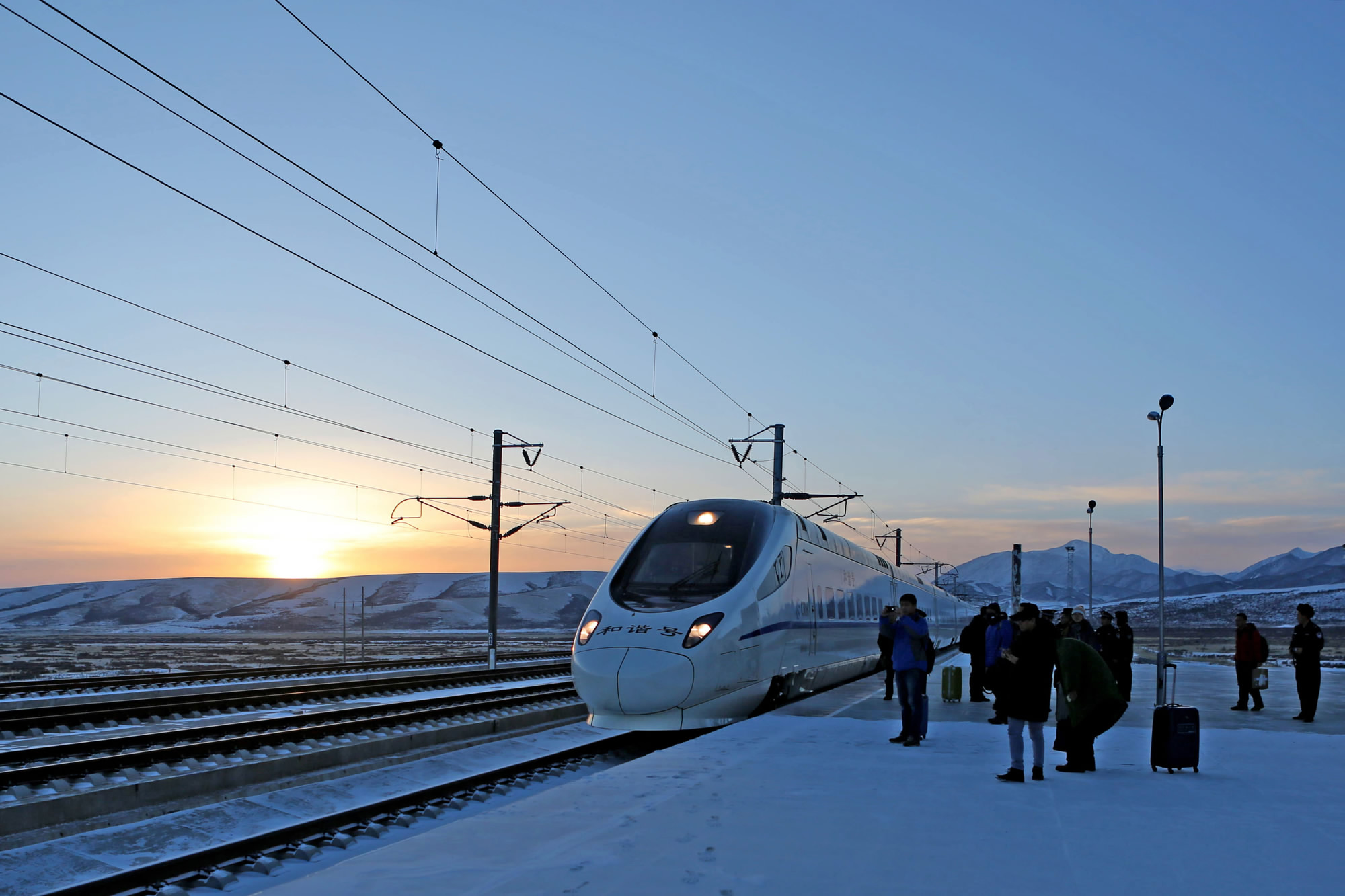
A bullet train stops at snow-covered Junmachang Railway Station, at an altitude of 3.1km in Xinjiang Uygur Autonomous Region./CFP photo
Infrastructure construction along the ancient routes is central to an initiative designed to deepen regional cooperation, strengthen exchanges and by doing so benefit the peoples along the routes. Railways, ports, pipelines and highways, either under construction or sealed in deals, are set to create a giant network that will become a catalyst for a huge boost in the flow and growth of trade.
Railways are vital to the strategy. Freight trains are carrying goods across continents with a route from Beijing to London already launched. But fast, efficient passenger rail is also a key growth driver, particularly in the developing countries the route crosses. Chinese companies have about 3,000km of overseas high-speed rail contracts on their order books according to the South China Morning Post, emanating from Eurasian countries including Turkey, Thailand, Indonesia and Russia.
Ankara-Istanbul High-speed Railway (HSR)
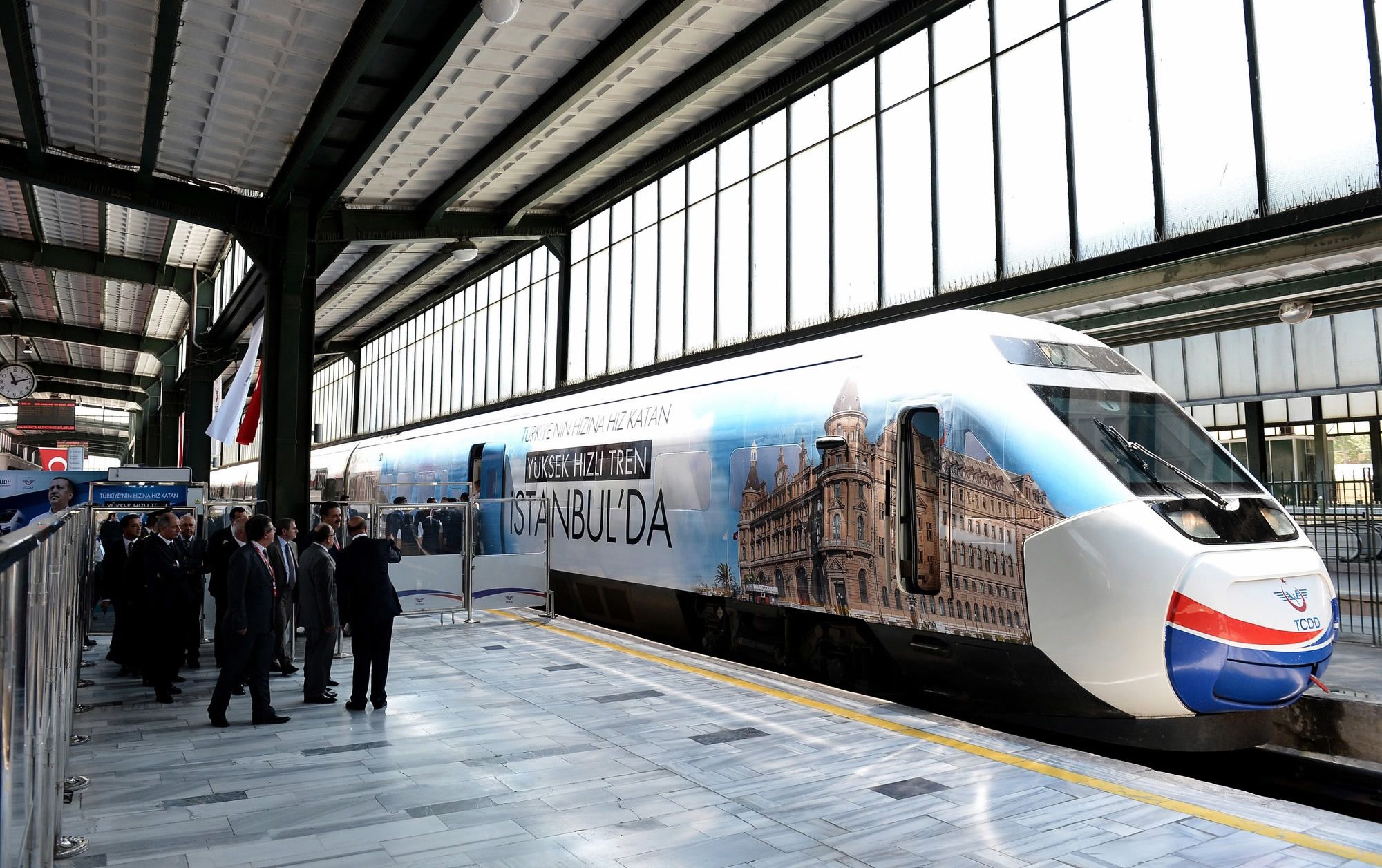
Maiden voyage of Ankara - Istanbul high-speed rail service in July, 2014. /AFP photo
Turkey launched a high-speed railway from its capital Ankara to the metropolis of Istanbul in July, 2014, halving the travel time between the two cities. The project was undertaken by the China Railway Construction Corporation (CRCC) and the China National Machinery Import and Export Corporation (CMC), together with two Turkish companies. It was the first overseas high-speed railway China collaborated on.
Hungary-Serbia HSR
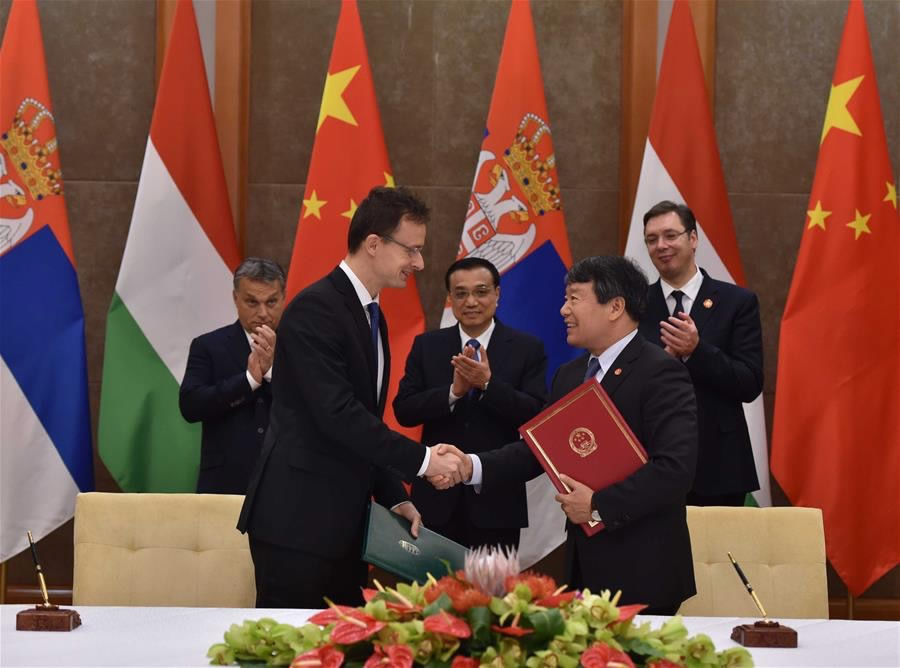
Signing ceremony of high-speed rail construction deals between China, Hungary and Serbia in Suzhou, Jiangsu Province on Nov. 24, 2015. /Xinhua photo
The construction of the Hungarian section of the rail link between Budapest and Belgrade is expected to begin in 2017, while work on the 180km Serbian section is already underway. China, Hungary and Serbia reached a deal in 2013 to modernize the railway. It is the first Chinese high-speed railway project in the European Union.
Moscow-Kazan HSR
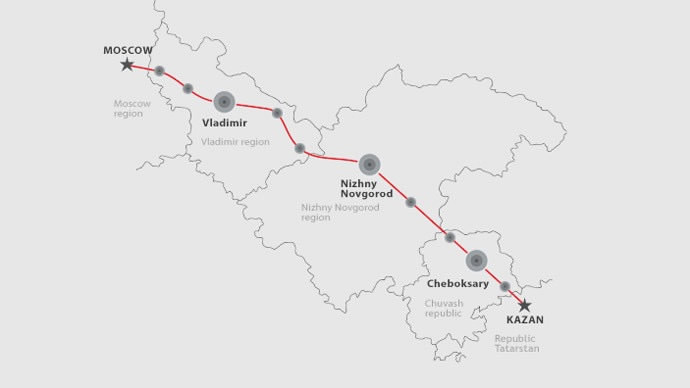
Map showing railway designed to link Moscow and Kazan. /Russia Today
China is designing a new generation of 400km/h trains that can be adjusted to fit the different track gauges of Russia and China when crossing the border from one country to the other. The initial railway construction, linking Russia’s Moscow and Kazan, is the first section of an ambitious transnational high-speed link set to connect Beijing and the Russian capital.
Ethiopia-Djibouti Railway
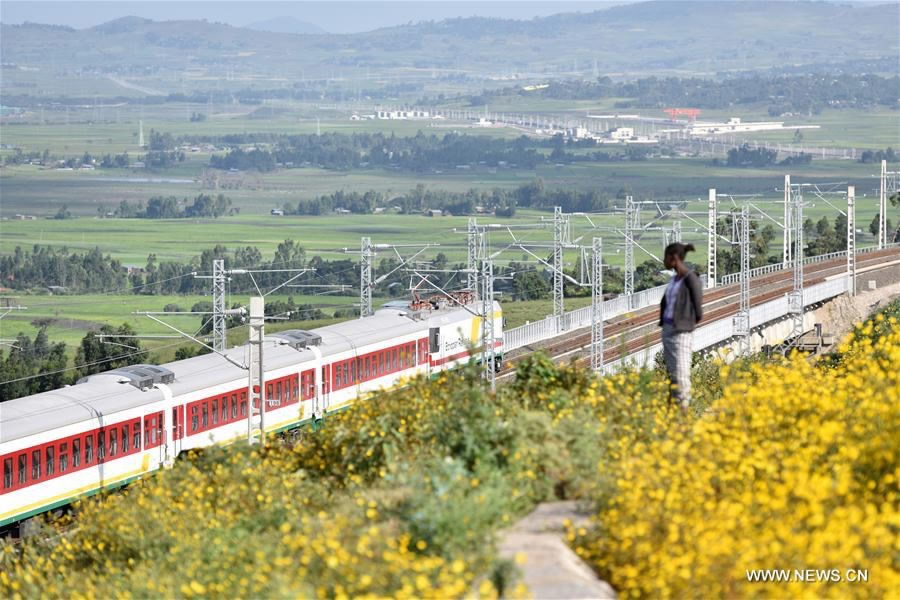
A train runs on the Ethiopia-Djibouti railway during an operational test near Addis Ababa, Ethiopia. /Xinhua photo
Chinese-designed railways have also entered Africa. The Ethiopia-Djibouti Railway, linking Ethiopia’s capital Addis Ababa and Djibouti’s homonymic port city was inaugurated in October this year. It is not only Africa’s first modern electrified railway, but also the first African transnational railway built by China since the Tanzania-Zambia Railway, also known as Tazara, was unveiled in 1976.
Jakarta-Bandung HSR
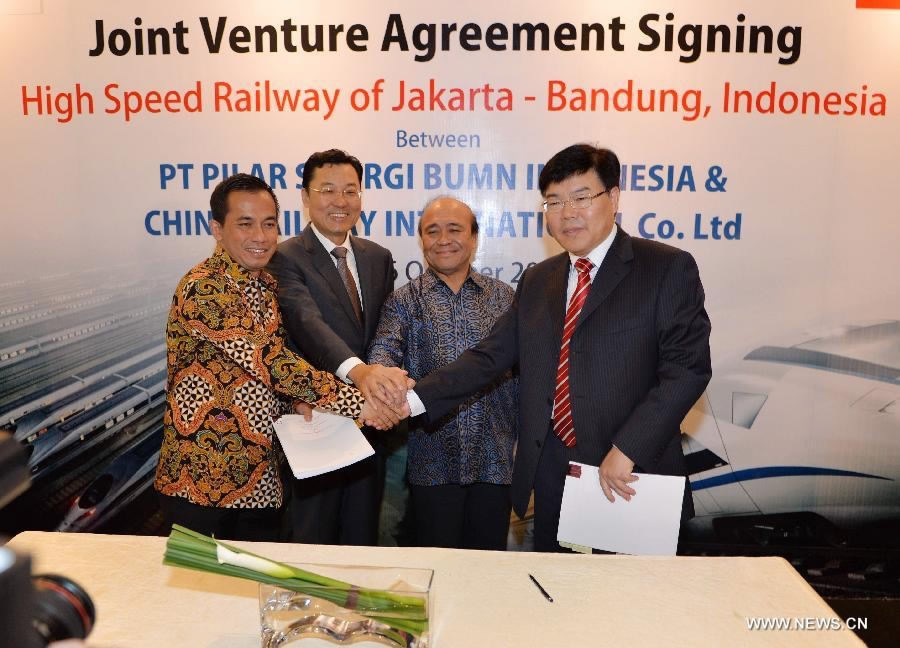
Signing ceremony to launch a joint venture for the Jakarta - Bandung high-speed railway on Oct. 15, 2015, in Jakarta, Indonesia. /Xinhua photo
Closer to home, China has sealed deals with several countries in Asia. China won a bid to build Indonesia’s high-speed railway linking Jakarta and Bandung in 2015, beating its Japanese rivals. The 142km track, which is expected to enter service in 2019, will cut the travel time between the two cities from over three hours to less than 40 minutes. It is also a significant step towards the construction of a vast Trans-Asia railway network which will link China with Southeast Asia.
China-Thailand HSR
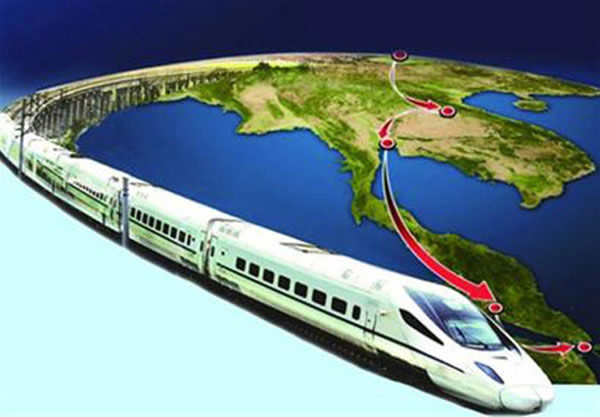
China has won the China-Thailand Railway project. /Xinhua photo
China will start the construction of a high-speed railway linking Bangkok and the province of Nakhon Ratchasima on the Thai-Lao border in 2017. The railway will run across Thailand, passing Laos’ Vientiane and reaching southwest China’s Yunnan Province, opening a new channel for trade and tourism in the region.
China-Laos Railway, China-Pakistan Economic Corridor (CPEC)
The China-Laos railway officially broke ground on December 25, 2016 in the northern Lao city of Luang Prabang. It will be the first overseas railway to connect with China’s domestic rail networks. It is expected to connect with the Kunming-Singapore railway, which passes through Laos, Thailand and Malaysia.
In South Asia, the China-Pakistan Economic Corridor (CPEC) proposed by Premier Li Keqiang is in steady progress. It is a 3,000km network of roads, railways and pipelines linking Kashgar in northwest China's Xinjiang Uygur Autonomous Region and southwest Pakistan's Gwadar Port.
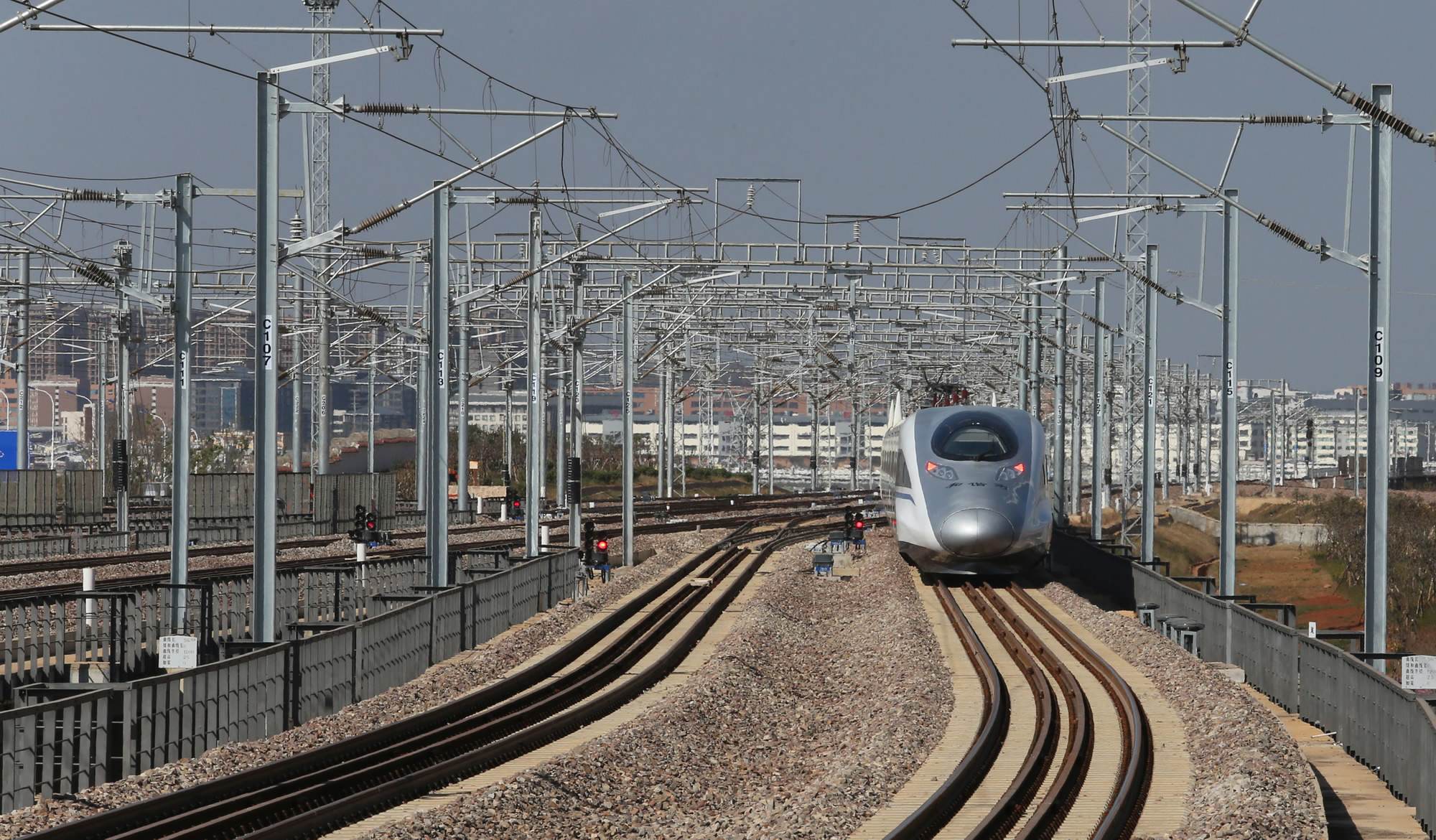
A train runs on the Shanghai-Kunming high-speed railway, which entered operation at the end of 2016. /CFP Photo
With tracks being steadily laid, China’s Belt and Road initiative is fast gaining steam. As of 2016, over 100 countries and international organizations had expressed interest in the initiative, and 40 of them have signed cooperation deals with China.
China’s domestic high-speed tracks had exceeded 20,000km, longer than the combined total of the rest of the world, by the end of 2016. But the country is far from the end of its high-speed journey. Transport authorities announced on December 29, 2016 that China will invest a further 3.5 trillion yuan (503 billion US dollars) to accelerate railway construction over the next five years.
In 2017, boosted by the inaugural Belt and Road summit, the modern rails of China will extend even further - speeding across its own territory and that of its international partners.
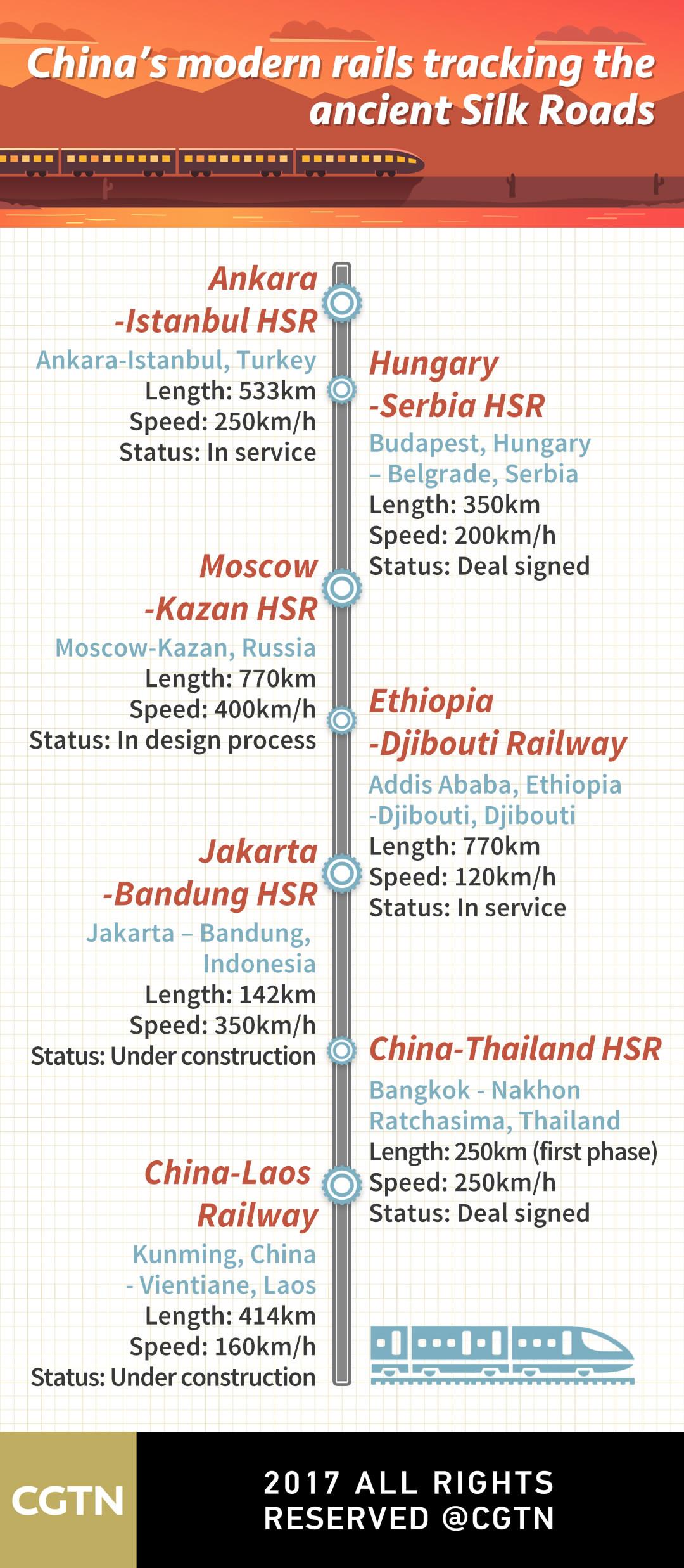
CGTN Photo
(Written by Ai Yan)









